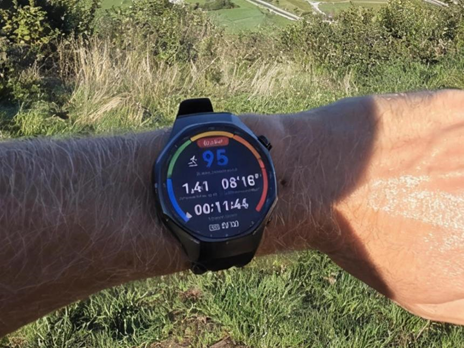What Are the Common Trail Running Injuries to Avoid?
Running on forest paths, rocky hills, and soft dirt feels refreshing, especially for people who spend most days on pavement or indoors. Many everyday runners turn to trails for stress relief, scenery, and a break from busy routines, yet they often underestimate how different this terrain can feel on their bodies. Simple factors like loose gravel, hidden roots, or uneven slopes can quickly turn a peaceful run into a painful setback, particularly for those without experience or preparation. Understanding common trail running injuries helps you recognize early warning signs, adjust your technique, and enjoy the outdoors with confidence rather than fear.

Ankle Sprains: The Trail Runner's Nemesis
How Uneven Terrain Increases Your Risk
Trail surfaces twist and tilt under your feet, which means your ankles must constantly respond to shifting pressure. Even casual runners notice how a distracted moment can lead to a misstep that rolls the ankle sharply to one side. The risk increases when your legs are tired, when light is low, or when you rush down a rocky descent without focusing on placement. Most people imagine sprains only happen to competitive athletes, but day-to-day trail jogs can create the same vulnerability when stabilizing muscles are not trained. Paying attention to how the ground feels beneath you and slowing down when the terrain becomes unpredictable makes a meaningful difference.
Strength and Balance Exercises for Prevention
Simple home routines can protect your ankles by improving stability, even if you only have a few minutes each day. Standing on one foot while brushing your teeth or cooking helps train the supporting muscles that react when the trail shifts. Adding small movements such as knee bends or soft hops increases difficulty without requiring equipment or athletic experience. These exercises build confidence because your body learns how to respond before a stumble becomes an injury. Practicing regularly keeps your joints supported and reduces hesitation when you return to the trail.
Knee Pain and IT Band Syndrome
Why Downhills Aggravate Knees
Descending slopes places more force on the knees because each step must absorb your body weight as gravity pushes you forward. Many runners notice discomfort during or after downhill sections, even if flat running never bothers them. The outside of the thigh, where the IT band runs, can tighten and pull on the knee joint, creating sharp or aching pain. People often assume their form is wrong, but the issue often comes from muscle fatigue or insufficient strength to control speed on declines. Learning to shorten your stride and keep a soft landing helps protect your knees during long descents.
Building Strength to Protect Your Knees
Strength training for trail runners does not need to feel intimidating or time-consuming to be effective. Movements like step-ups, supported squats, or gentle lunges prepare your hips and thighs to guide the knee instead of letting it collapse inward. These muscles act as shock absorbers, making rough paths feel smoother and reducing irritation in the IT band. Consistency matters more than intensity, especially for people juggling work, family, and limited exercise time. When your legs are strong, every trail run feels more controlled and enjoyable.
Falls and Impact Injuries
The Role of Fatigue and Foot Placement
Fatigue makes falls more likely because your brain reacts slower and your feet land less precisely on uneven ground. Many runners experience tripping not at the start of a run, but near the end when concentration fades. Practicing mindful foot placement keeps you present by noticing rocks, ruts, and branches instead of letting your thoughts drift. Some runners explore the idea of what is cadence running because maintaining a steady step rhythm can improve balance and reduce catching the toe on obstacles. Awareness, even in short periods, helps prevent sudden impacts.

Learning How to Fall and Tumble Safely
Even with care, every trail runner eventually missteps, so learning to fall safely reduces the severity of injuries. Keeping your body loose rather than stiff allows energy to disperse instead of concentrating in one joint. Rolling to the side protects wrists and elbows, which often take the first hit when someone puts their hands out to stop themselves. Practicing gentle tumbling movements on soft surfaces builds familiarity without fear. Knowing how to fall gives reassurance, making the trail feel less threatening and more playful.
Foot and Calf Injuries
Plantar Fasciitis and Achilles Pain
Long climbs, sudden descents, and uneven pushes off the ground can irritate the bottoms of the feet and the back of the lower leg. Many people notice stiffness when getting out of bed or after sitting for long periods following a run. These aches often start mild but can worsen if ignored, especially when shoes or muscles are not prepared for repeated strain. Stretching calves and gently massaging the arches can ease tension and support healing between runs. Listening early to discomfort helps avoid more serious setbacks.
Managing Repetitive Strain on Tough Terrain
Running on roots, gravel, and slanted footpaths forces the smaller muscles of the feet and calves to work harder than on flat sidewalks. Alternating trail days with rest or lighter movement days prevents overuse while still maintaining progress. Increasing distance or steepness slowly protects tissues that need time to adapt to new demands. Some runners benefit from tracking heart rate zones or step frequency with a device, and a Huawei smartwatch can help monitor training intensity in a simple way that supports safer progression. Gentle pacing choices allow the body to adjust while still enjoying the outdoors.
Your Proactive Injury Prevention Plan
A prevention plan works best when it blends into daily life rather than feeling like another chore on an already full schedule. Warm-up routines, even just a few dynamic movements before heading out, prepare joints and muscles for uneven surfaces. Post-run habits like stretching, refueling, and checking in with soreness levels give you early insight into potential issues before they interrupt your running routine. Planning routes that match your energy level and daylight conditions also reduces risk, especially for beginners still learning how their bodies respond to trails. When prevention becomes routine, trail running feels safer, more comfortable, and more sustainable across seasons.
Conclusion
Trail running offers freedom, scenery, and a refreshing sense of exploration, but staying healthy is the key to enjoying it long term. By understanding common injuries and learning how to reduce risk, you build confidence and ease with every step on uneven ground. Simple strength habits, mindful pacing, and attentive recovery make a noticeable difference for runners of all experience levels. With patience, you will discover that safety does not limit adventure—it expands it. Embrace these practices and enjoy a trail journey that is stronger, safer, and more rewarding.
 crowdmobs
crowdmobs






